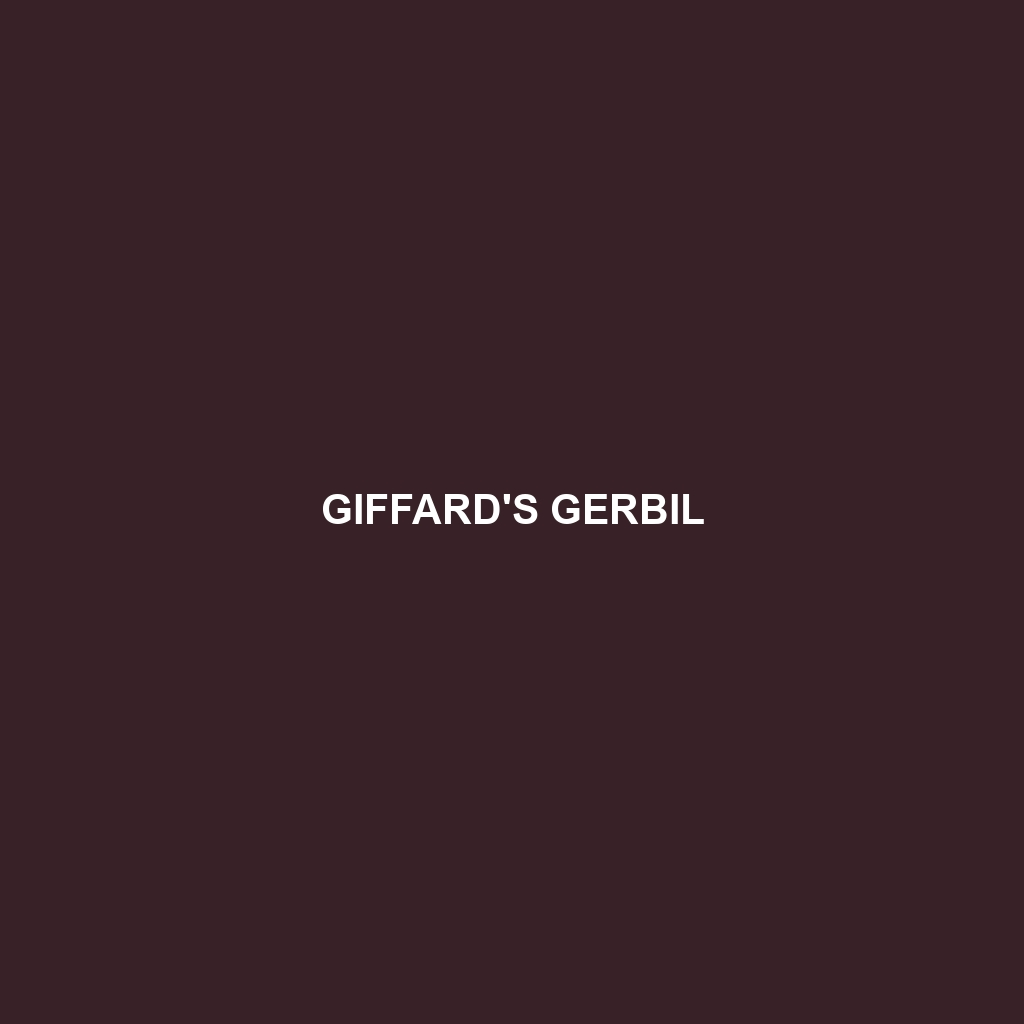Description of Giffard’s Gerbil
Common Name: Giffard’s Gerbil
Scientific Name:
Habitat
Giffard’s Gerbil is primarily found in the arid and semi-arid regions of northern Africa, particularly in countries such as Morocco and Algeria. Its natural habitat includes sandy dunes, scrubland, and grassland areas, where these gerbils thrive in warm climates. They are well-adapted to life in sandy soils, which provide ample opportunities for burrowing and creating complex tunnel systems.
Physical Characteristics
Giffard’s Gerbil measures approximately 10 to 15 centimeters (3.9 to 5.9 inches) in length, with a bushy tail that can add another 7 to 10 centimeters (2.8 to 3.9 inches) to its total length. This species exhibits a soft, dense coat of fur that is typically sandy-brown to light yellow in color, providing excellent camouflage in its natural environment. Notable features include large, rounded ears and long hind legs, which allow for impressive agility and speed.
Behavior
Known for their social structure, Giffard’s Gerbils often live in small family groups. They are primarily nocturnal, exhibiting more activity during the cooler nighttime hours. These gerbils engage in various behaviors, including burrowing, grooming, and playing, which are vital for their social bonding and survival. Their ability to dig extensive tunnel systems not only provides shelter but also storage for food and nesting materials.
Diet
Giffard’s Gerbil primarily feeds on seeds, grains, and various plant materials. Their diet is adapted to their dry habitat, allowing them to thrive on the sparse vegetation available. During foraging, they often store food in their burrows, which helps them survive food shortages during dry periods. The gerbil’s diet is crucial for maintaining energy levels, particularly in the challenging environments they inhabit.
Reproduction
The breeding season for Giffard’s Gerbil typically occurs in the spring months, coinciding with increased food availability. Females can give birth to litters averaging 4 to 6 pups after a gestation period of about 25 days. The young are born altricial, meaning they are hairless and blind, and they depend on their mother for care during the early stages of life. This advantageous timing ensures that the offspring have better chances of survival in a resource-rich environment.
Conservation Status
Currently, Giffard’s Gerbil is classified as vulnerable according to the IUCN Red List. Habitat loss due to agricultural expansion and climate change poses significant threats to their population. Conservation efforts are essential to ensure this species can continue to thrive in its natural habitat.
Interesting Facts
Giffard’s Gerbils have developed exceptional adaptations to their harsh environments, including the ability to conserve water and maintain hydration. They are also known for their impressive jumping ability, which helps them evade predators in the wild. Furthermore, their intricate burrow systems play a vital role in the local ecosystem, providing shelter for other small species.
Role in Ecosystem
As a primary consumer, Giffard’s Gerbil plays a crucial role in the desert ecosystem. By feeding on seeds and plants, they help control vegetation growth and contribute to seed dispersion. Additionally, their burrows provide habitats for other creatures, fostering biodiversity within their environment. This species, therefore, is vital for maintaining ecological balance in their native habitats.
